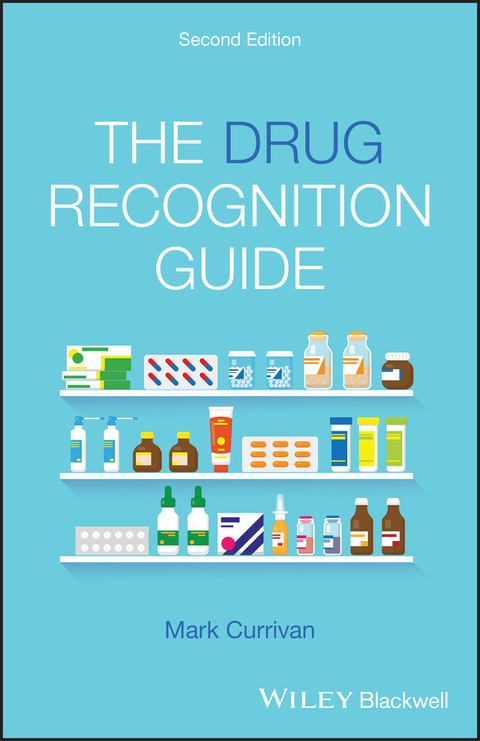
The Drug Recognition Guide
Wiley-Blackwell (Verlag)
978-1-119-68980-5 (ISBN)
Organised by class and use, the book's ten chapters cover a comprehensive range of drugs, including chemotherapy and immunosuppressants, drugs that affect the cardiovascular and respiratory systems, drugs used to manage pain, treat infectious diseases, and many others. Each entry briefly summarises a particular class of drugs, describes the intended use of drugs within the class, and breaks down the "name stems" of individual drugs to reveal useful information and illustrate connections between chemically and therapeutically related medicines.
Presenting an original, easy-to-use approach to the complex subject of drug classification, this invaluable learning aid:
- Provides a thorough yet accessible way for students and practitioners to increase their understanding of medications and their application
- Helps students to clearly read and pronounce even the most difficult generic drug names
- Highlights the letters in generic drug names to enable students to recognise drugs immediately
- Explains who assigns a generic drug name and what the name represents
- Includes an introduction to generic and proprietary drug names and design motifs
»The Drug Recognition Guide« is essential reading for nursing and medical students, pharmacy students and technicians, as well as nurse practitioners and trainee and junior doctors.
Mark Currivan is Senior Staff Nurse, Medication Competency Assessor, and former Practice Development Leader at Wirral University Teaching Hospital, UK. He is a regular guest lecturer on medicines management at the University of Liverpool for the Bachelor of Nursing Programme, and has played an important part in advancing nursing curriculum development around safe medicine administration to meet the Nursing and Midwifery Council's Standards of Proficiency for Registered Nurses.
Page 4 Foreword.
Page 5 Introduction.
Page 7 Drug Names: Generic and Proprietary.
Page 8 Drug Names and Design Motifs.
Page 8 Information about the Guide.
Page 11 Chapter 1: Drugs that affect the
Gastrointestinal System.
Page 18 Chapter 2: Drugs that affect the
Cardiovascular System.
Page 38 Chapter 3: Drugs that affect Blood
Coagulation and Lipids.
Page 51 Chapter 4: Drugs that affect the Respiratory
System.
Page 57 Chapter 5: Drugs that affect the Central and
Peripheral Nervous System.
Page 79 Chapter 6: Drugs used in the Management
of Pain.
Page 89 Chapter 7: Drugs used in the Management
of Nausea and Vomiting.
Page 95 Chapter 8: Diabetes Therapy and other
Drugs that affect the Endocrine System.
Page 111 Chapter 9: Drugs used to treat Infectious
Diseases.
Page 126 Chapter 10: Chemotherapy and
Immunosuppressants.
Page 139 Index of Drug Groups.
Page 144 Index of Drugs.
| Erscheinungsdatum | 09.04.2021 |
|---|---|
| Verlagsort | Hoboken |
| Sprache | englisch |
| Maße | 142 x 216 mm |
| Gewicht | 182 g |
| Einbandart | kartoniert |
| Themenwelt | Medizin / Pharmazie ► Medizinische Fachgebiete ► Pharmakologie / Pharmakotherapie |
| Medizin / Pharmazie ► Pflege | |
| Medizin / Pharmazie ► Pharmazie ► Pharmazie Studium | |
| Studium ► Querschnittsbereiche ► Klinische Pharmakologie / Pharmakotherapie | |
| ISBN-10 | 1-119-68980-5 / 1119689805 |
| ISBN-13 | 978-1-119-68980-5 / 9781119689805 |
| Zustand | Neuware |
| Informationen gemäß Produktsicherheitsverordnung (GPSR) | |
| Haben Sie eine Frage zum Produkt? |
aus dem Bereich


